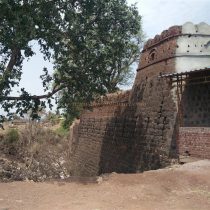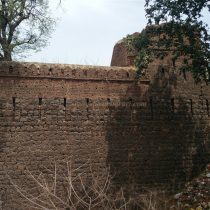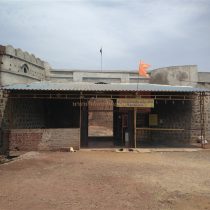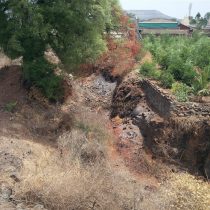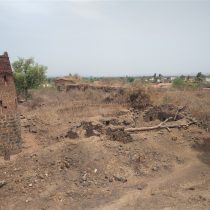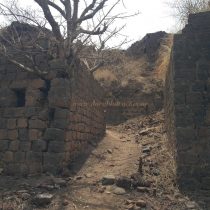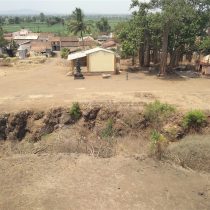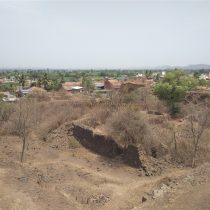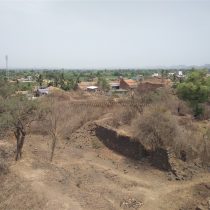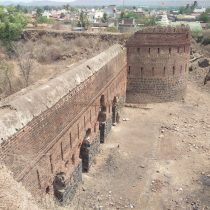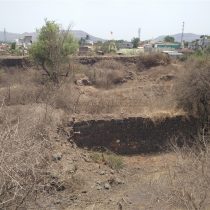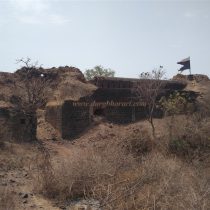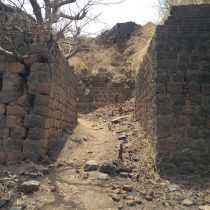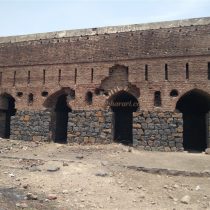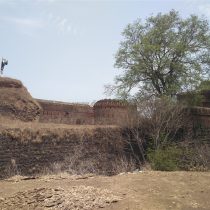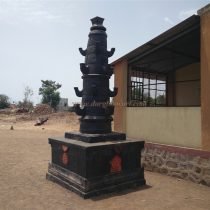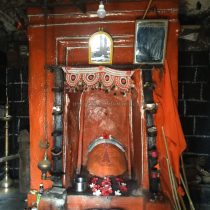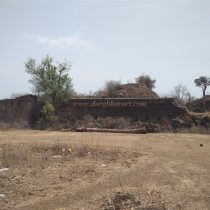BAHADURWADI
TYPE : GROUND FORT
DISTRICT : SANGALI
HEIGHT : 0
GRADE : EASY
The highest number of forts in the Sangli district is in Valva taluka. These include the forts of Vilasgad, Machhindragad, and ground forts like Bagni and Bahadurvadigad. Bahadurwadi fort is 32 km from Kolhapur and at a distance of 30 km from Sangli via Kavthepiran-Dudhgaon-Bagni. By private vehicles, we reach the fort at the end of the village. There are deep moats on all four sides of the fort. The front gate of the fort and the adjoining bastions attract our attention. The outer ramparts adjacent to the bastion to the right of the gate have collapsed into this moat. The moat is overgrown with bushes. The outer ramparts are made of stone and lime, while the curtain wall is made of bricks. An idol of Lord Ganesha is installed on the right side of the door next to the bastion.
...
The original beauty of this door and bastion has been lost as cement was used during the renovation of this part and also a tin shelter has been erected in front of the door. Inside the door, there are guard porches on both sides and steps to go to the curtain wall. This fort is spread over an area of about two and a half acres and is square. The fort has double ramparts with the main fort on the outside and citadel on the inside. There are a total of twelve bastions in the outer ramparts out of which six bastions have been completely demolished except for the two adjoining bastions and the remaining four bastions. There are a total of eight bastions in the ramparts of the citadel, out of which two bastions have collapsed while the remaining six bastions are in good condition. The area of the fort is about 1 acre. Upon entering through the gate, one can see the ramparts and two bastions of the citadel in front. The ramparts are approximately eighteen feet high, the lower half of these ramparts are made of stone and lime, and the upper half is made of bricks. In the ramparts between these two bastions, four arched porches can be seen. The locals say that these are horse stables. Ba Raigad fort conservation organization has undertaken the conservation work of this fort and they have taken very good care of the area outside the citadel. A large number of architectural remains can be seen in this area. From here, you enter the citadel by a perpendicular path through the collapsed ramparts. As the conservation work of the fort is still pending, there are huge bushes everywhere inside the citadel and most of the remains are hidden inside these trees. There is a large mansion in the fort and while walking through the trees, you can see a water tank and Tulsi Vrindavan in this mansion. To supply water to this fort, there is a square 50 feet deep well in one corner of the mansion, and steps have been built to descend into this well. There is a rampart built around this well. Apart from this, the well can be accessed through a small gate on the ramparts of the fort. This is where your fort round ends. One hour is enough to cover the entire fort. Apart from this, there is a small temple of Vetoba outside the fort. According to local folklore, this fort was built by Mahipatrao Ghorpade along with the village of Bahadurbinda during the reign of Adilshah, but later the name of this village was changed to Bahadurwadi. Since Madhavrao Peshwa is a devotee of Ganesha, looking at the idol of Lord Ganesha on the main gate of the fort, it seems more convincing that this fort was built by him. After the division of the Satara kingdom and Kolhapur kingdom of the Maratha Empire, the river Varna was decided as the boundary of this empire. To protect the border from the invasion of Kolhapurkar Bhosale, Madhavrao Peshwa built a fort on the border, with double fortification and moat along the river Varna, and handed it over to the Patwardhan's of Miraj. As this fort is very close to Kolhapur state, it is recorded in the Karveer kingdom that the Chhatrapati of Karveer ordered the demolition of Bahadurgad. After the conquest of the Maratha Empire, even this fort, like other forts, came under the control of the British.
© Suresh Nimbalkar

